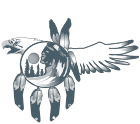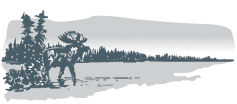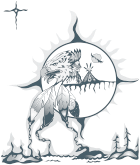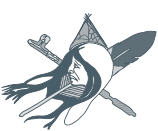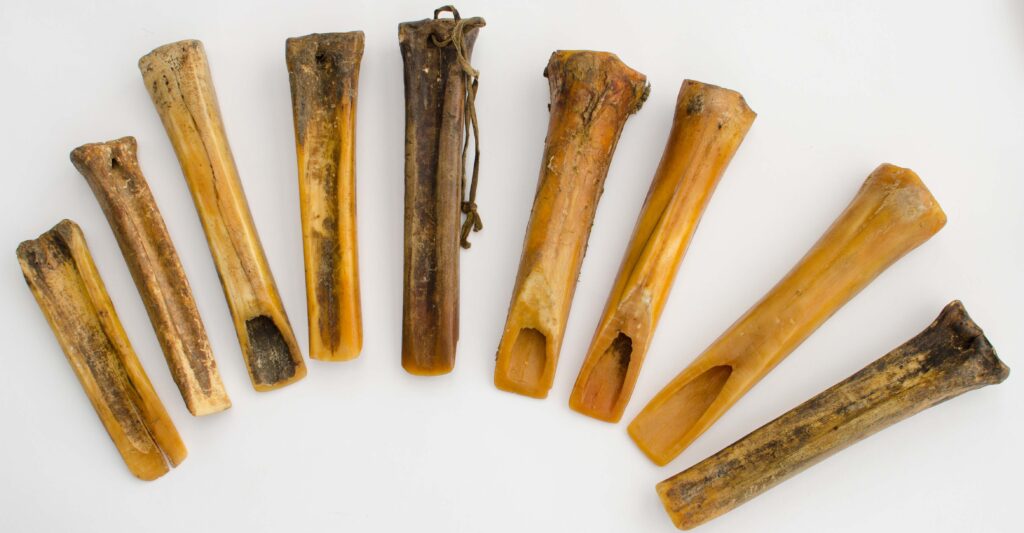
Pauingassi First Nation is proud of its collection of over 200 artefacts, which is cared for by Manitoba Museum in its Sacred Storage area and viewed only on rare and special occasions.
Dr. Maureen Mathews worked with Elders in the community to understand the history of the artefacts and their relationship to each other. As Curator of Cultural Anthropology at the museum, she works with community Guardians to ensure the artefacts’ safe-keeping.
In celebration of the 50th Anniversary of the World Heritage Convention, we asked special permission to share photographs of 21 artefacts. Some artefacts were used in two important ceremonies:
- Waabano, an Anishinaabe social dance in the Pauingassi area
- Boodaade, a dream dance which originated in Pauingassi
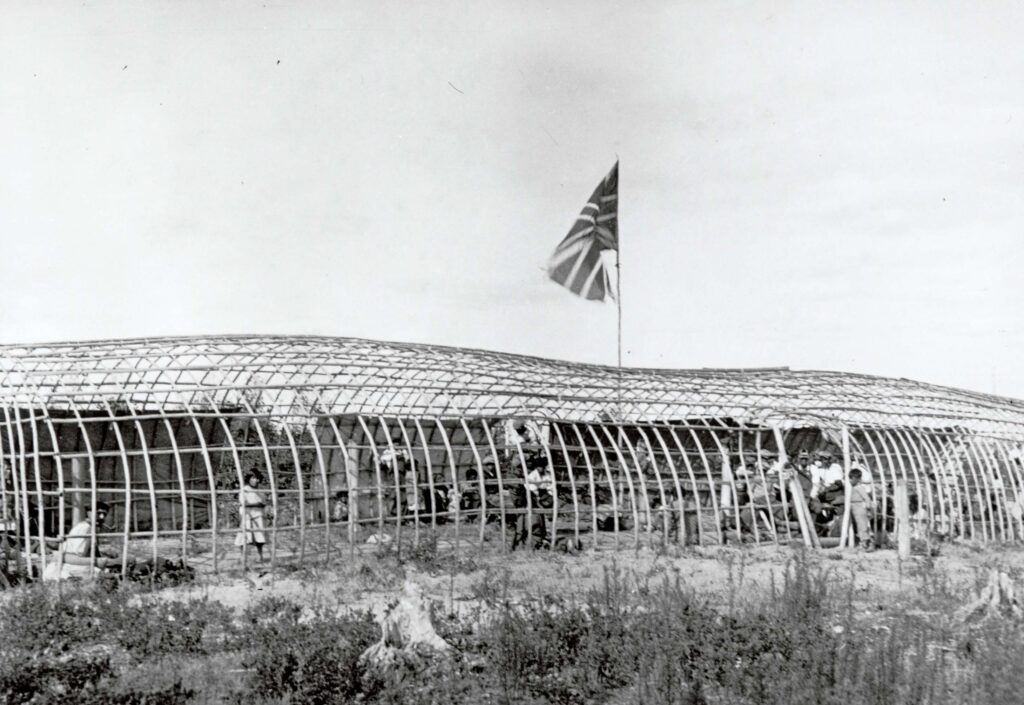
Photo: American Philosophical Society, Hallowell Collection
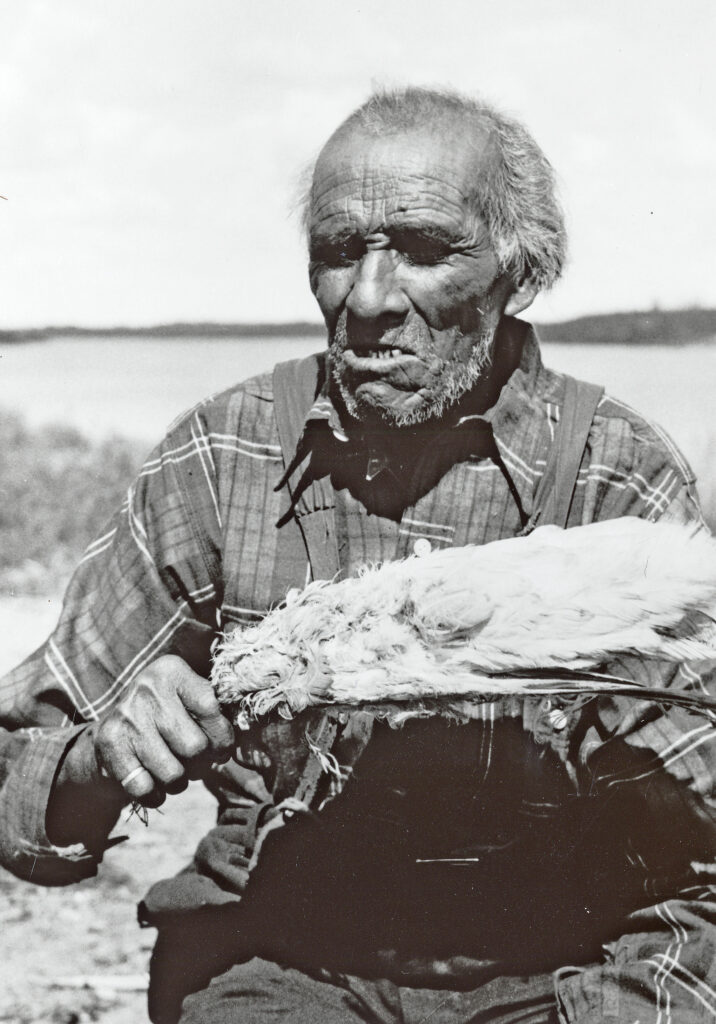
Photo: American Philosophical Society, Hallowell Collection
Learn more in Obaawingaashing Gichi-Aabijitaawinan | Pauingassi Collection, a book about the Anishinaabe ceremonial artefacts and community collections. You can donate to Pimachiowin Aki World Heritage Fund to receive a copy. Visit the Shop page for details.
1. Naamiwan’s water drum
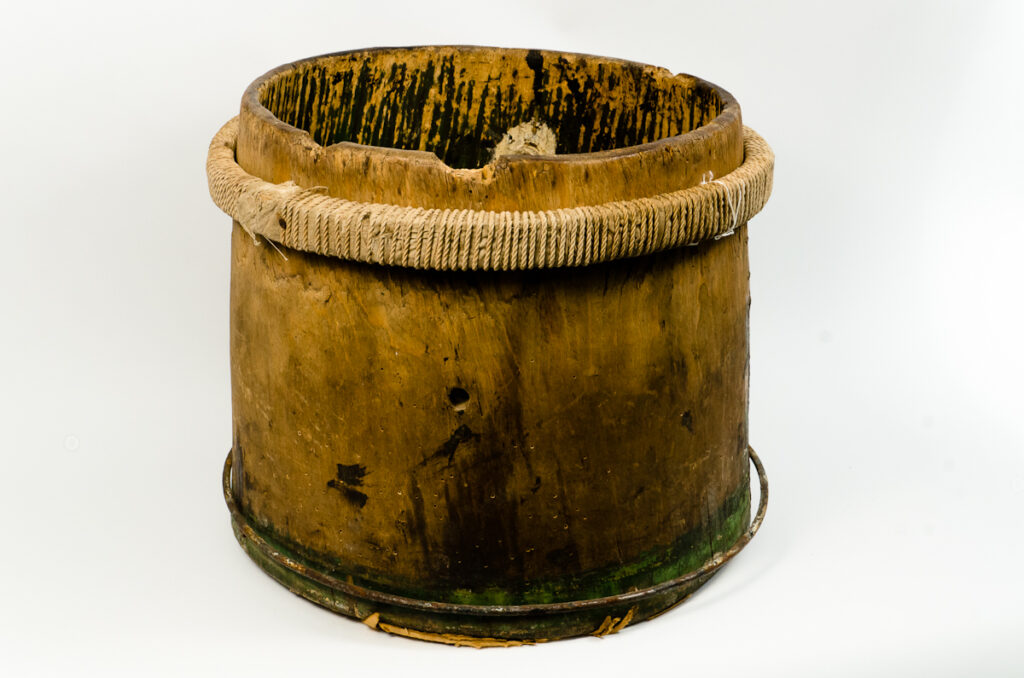
2. Naamiwan’s dewe’iganaatig (drumstick)
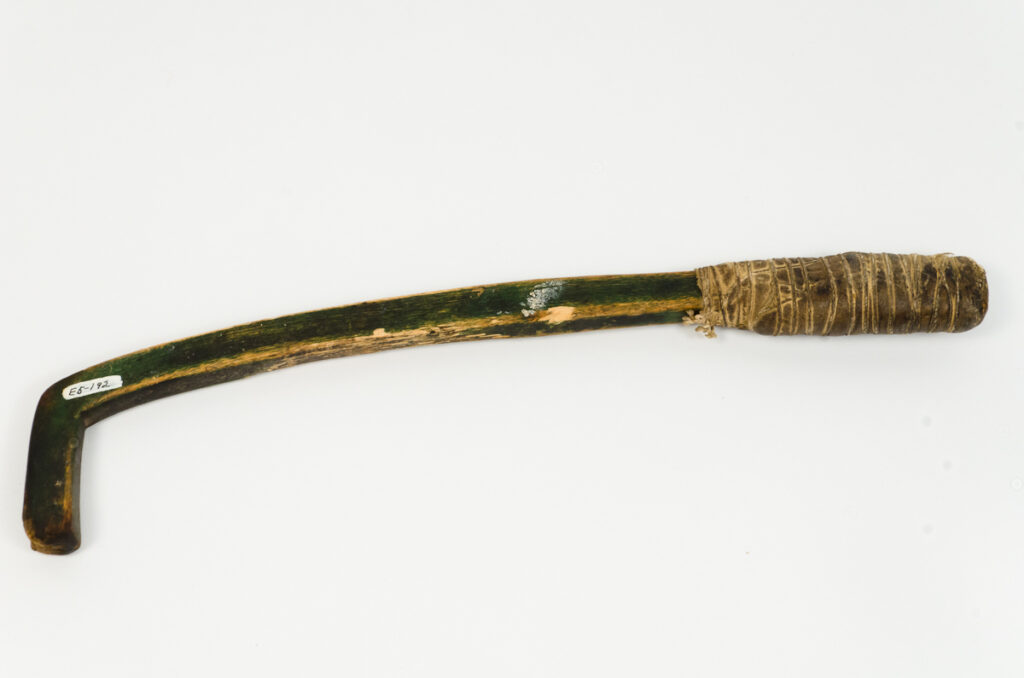
3. Naamiwan’s mitigwakik (metal rattle)
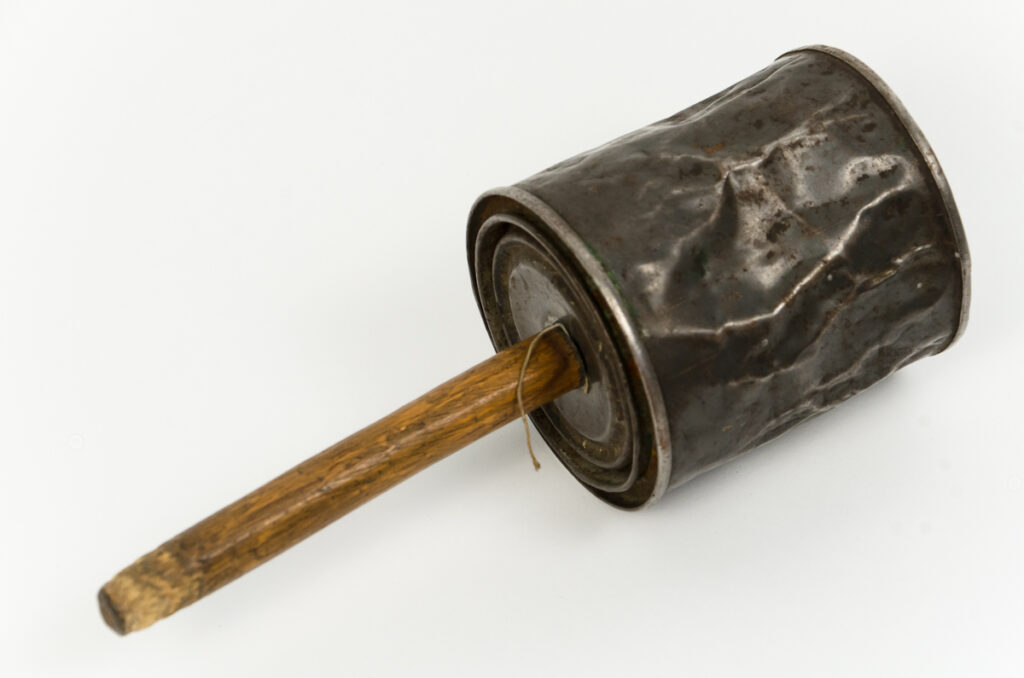
These powerful objects are Naamiwan’s personal water drum, drumstick, and metal rattle. He used this drum in his Midewiwin practice and played it during sweat lodges and Waabano ceremonies. Naamiwan was assisted in his practice by the drum and drumstick who also called upon his small drum-shaped rattles (below) for healing. As wiikaanag (ritual brothers) these ceremonial objects once helped save the life of Naamiwan’s grandson Omishoosh Owen.
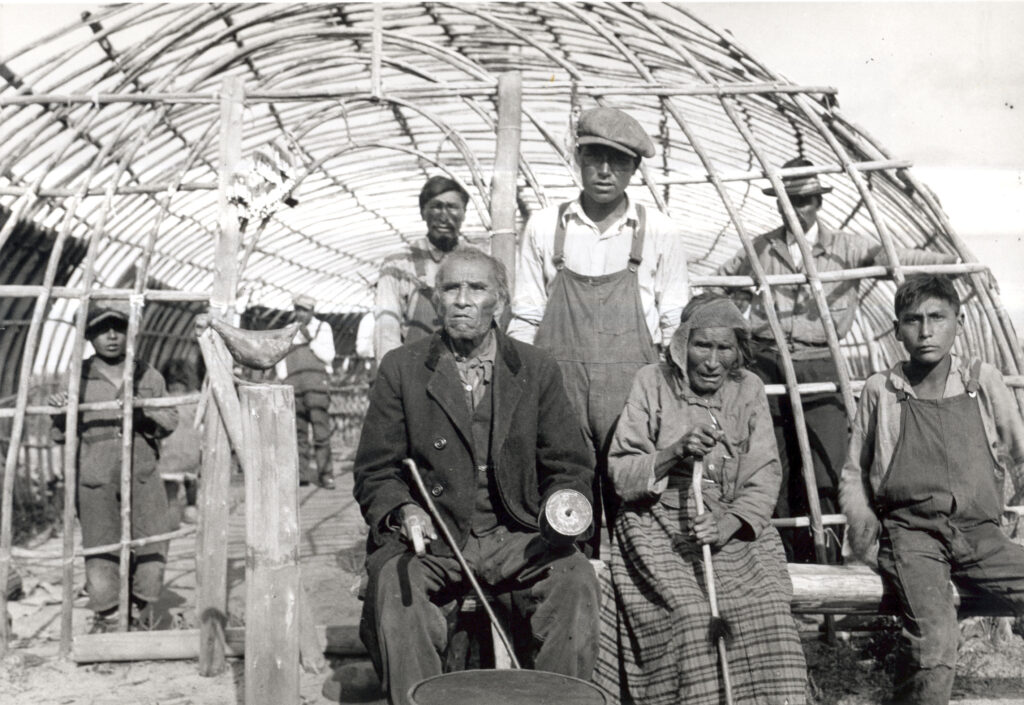
4. Naamiwan’s zhiishiigwanag (rattles)

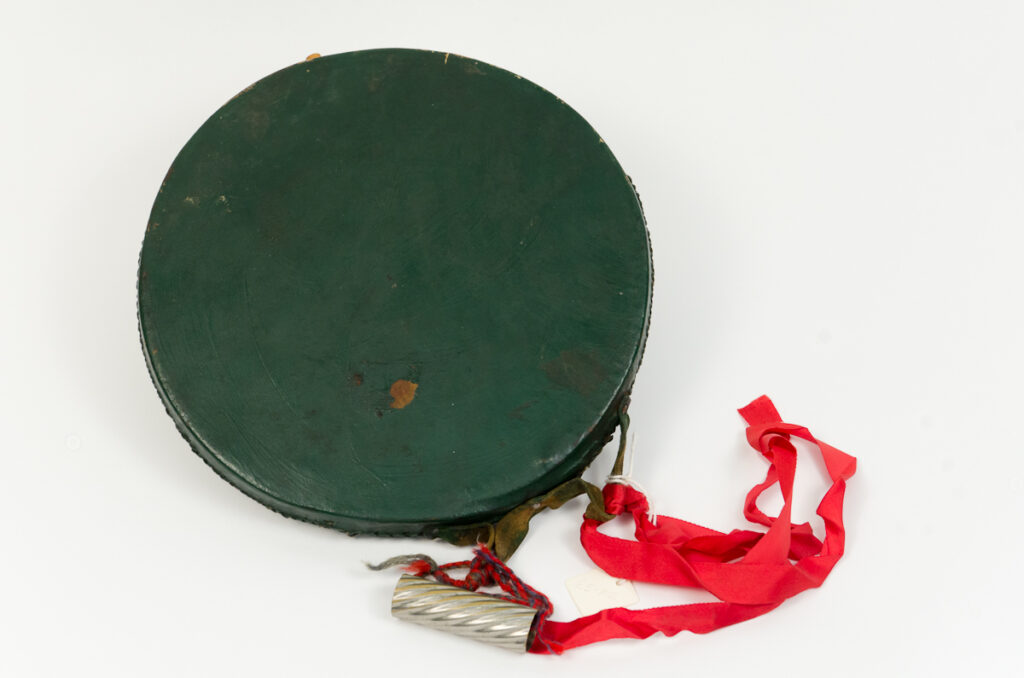
Naamiwan used these rattles—one with a sucking tube and another with ribbon—to invoke a state of being called gwiingwa’age (a wolverine). He tapped the rattle on his chest while singing, and in the persona of a wolverine, was sometimes able to travel to the land of the dead to bring people back.
5. Naamiwan’s Boodaade (dream drum)
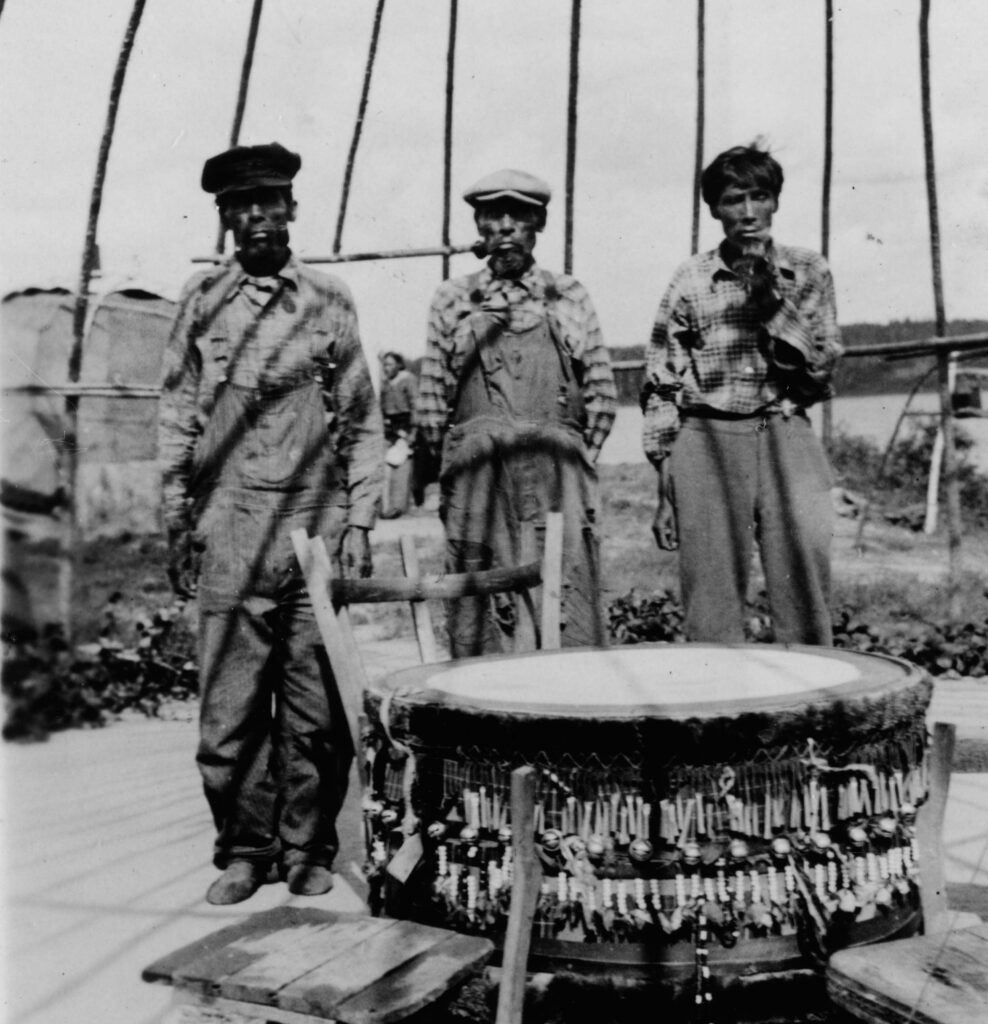
This drum was named Gibaabaanaan and a brother drum made some years later was called Gaa-gizhewaadizid (the Gracious One). At a site near present-day Pauingassi First Nation, renowned medicine man Naamiwan (Fairwind) had a dream to make Gibaabaanaan, the drum that you see here. This healing drum cured many people. The drum was also used to communicate with the dead and guide souls safely along the flower-lined path to the land of the dead—the land of summer birds.
6. Boodaade baagaamaaganan (drumsticks)
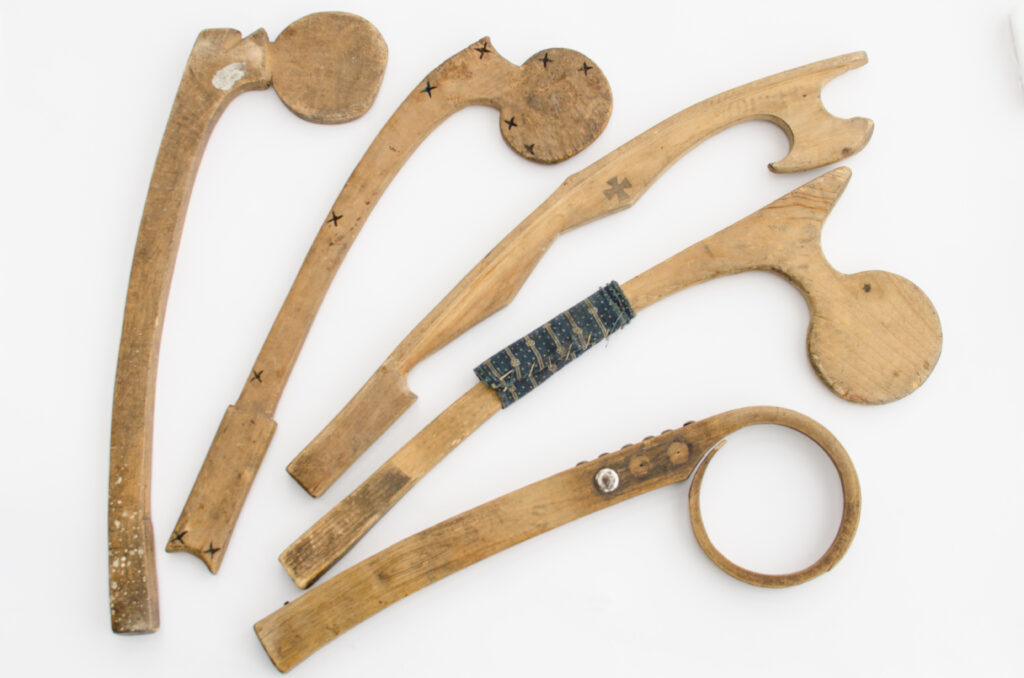

These drumsticks are made specifically for use with the Boodaade drum and are shaped to reflect the Anishinaaabe war club, hence the alternated name, bekwaag dewe’iganaatig.
The drumstick in the middle belonged to Naamiwan’s eldest son Angus Owen who was leading ceremonies in Pauingassi by the 1940s. Omishoosh remembers being present when Angus Owen made this drumstick.
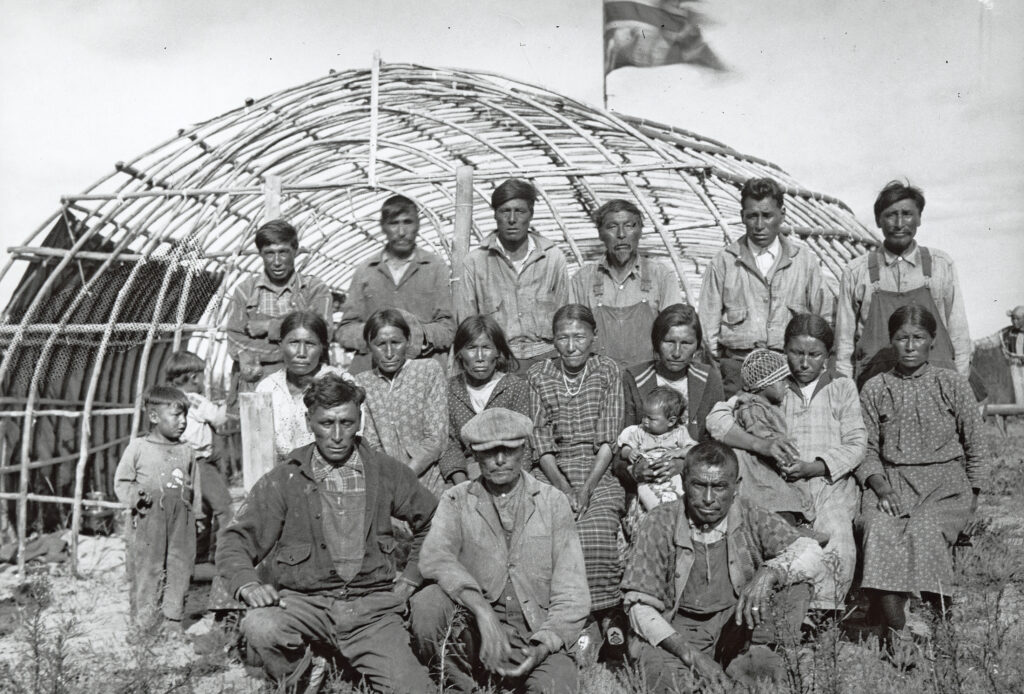
Photo: American Philosophical Society, Hallowell Collection
7. Wawezhi’onan (dance capes)

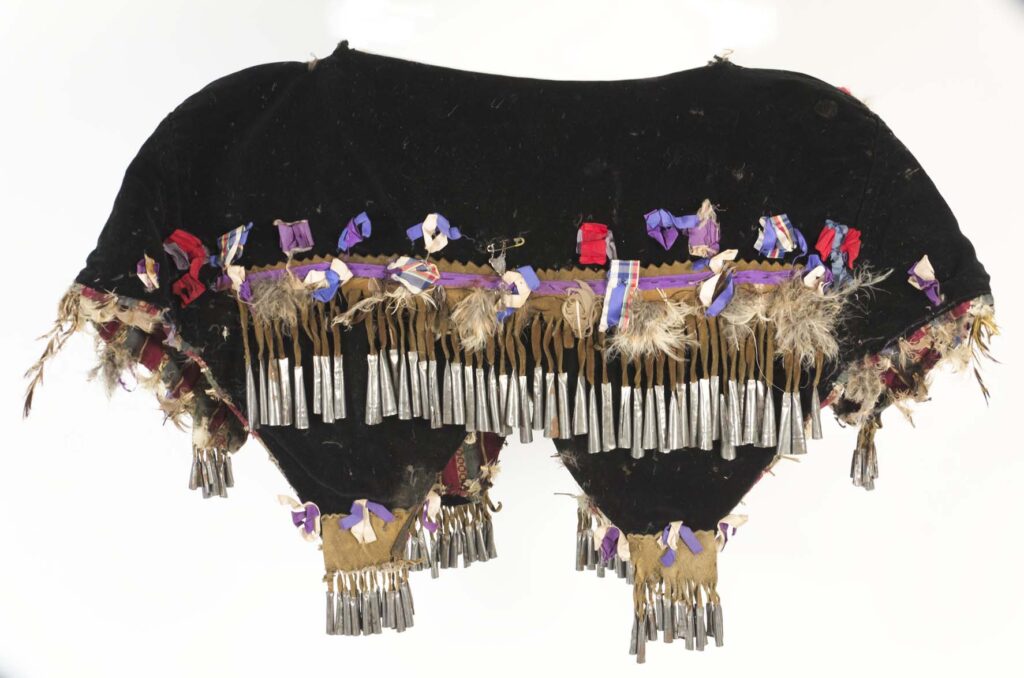
Ogichidaakweg (grand warrior women) wore dance capes in the Boodade ceremony. The capes were part of Naamiwan’s dream and made by women in the community who participated in the ceremony. In this ceremony, Ogichidaakweg led the dance, coming first into the Boodaadewigamig (round ceremonial lodge).
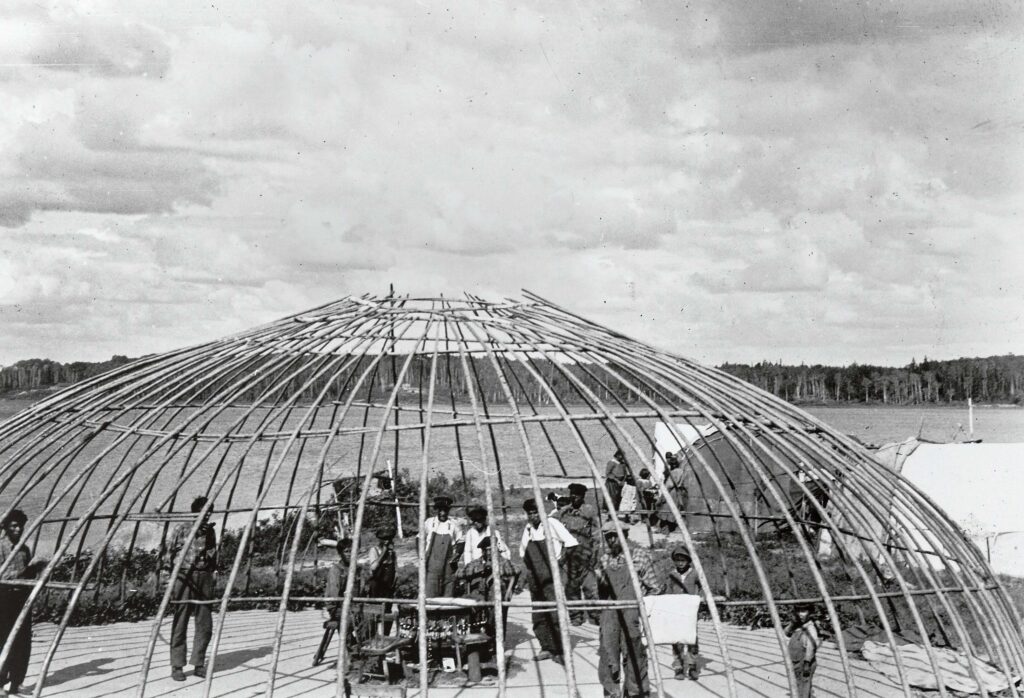
8. Gijipizon (belt)
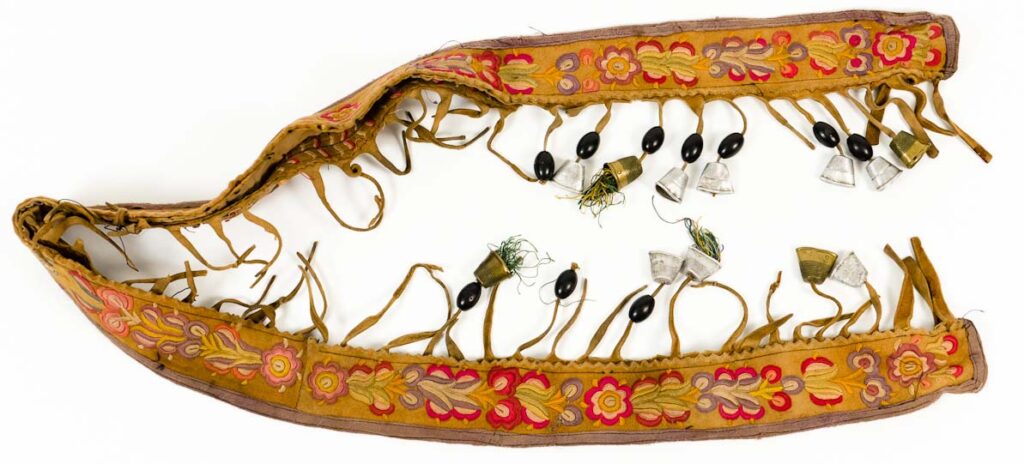
The bandolier-style belt with gaanda’igwaasonag (thimbles) tinkled as Oshkaabewisag (apprentices) danced in Waabano and Boodade ceremonies. This piece has beautiful silk button-hole stitch embroidery.
9. Apishtaagan (chest protector)
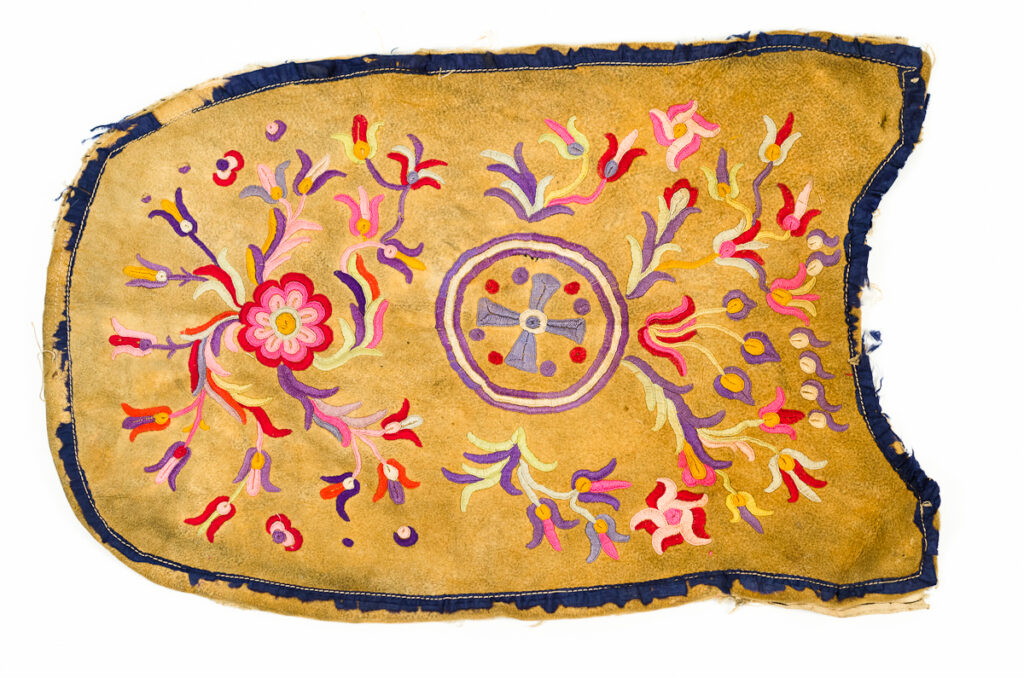
Worn under the shirt as a chest protector, this piece is part of the regalia Omishoosh wore in ceremonies. The embroidered design inside the circle is called Gaagige Anang (the Forever Star). It is a representation of the Star spirit, the one who visits you in dreams.
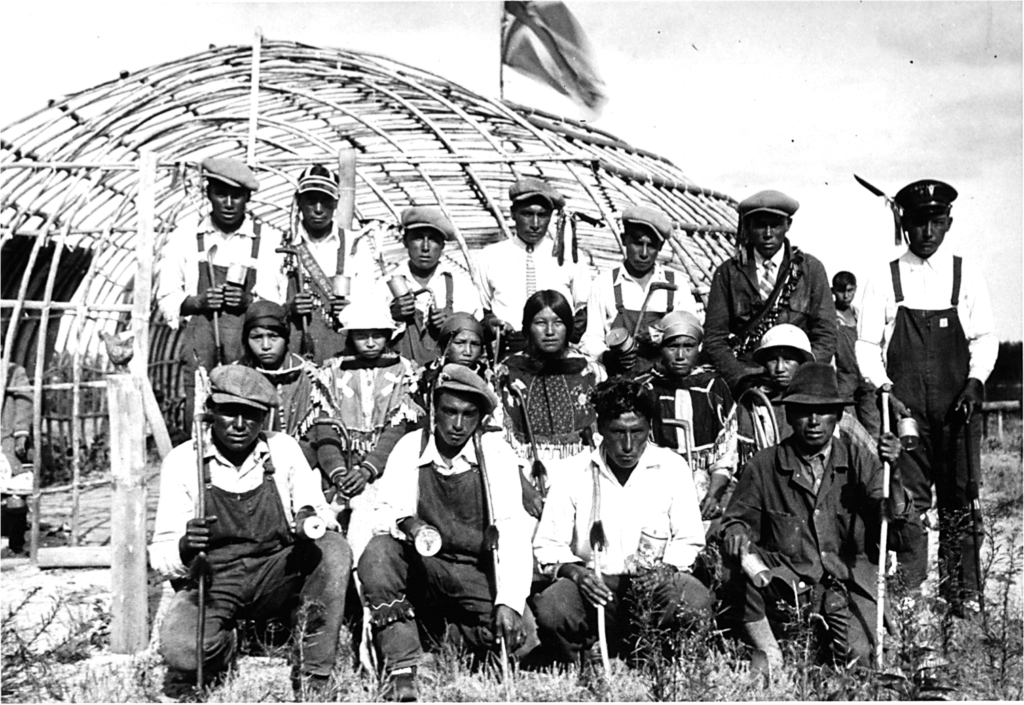
10. Zhiishiigwanag (rattles)
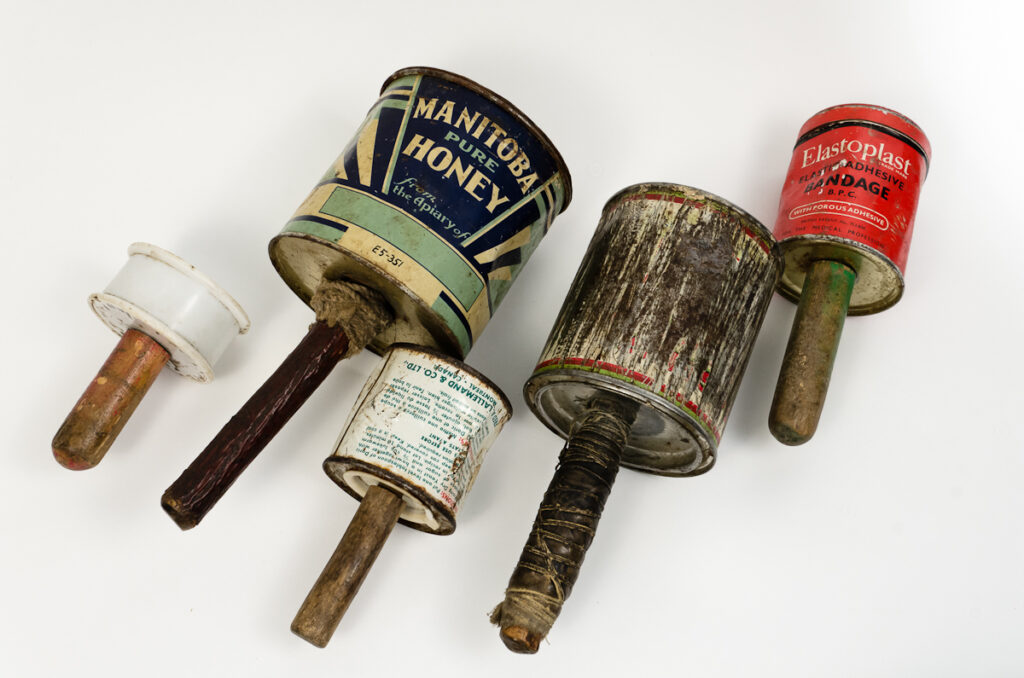
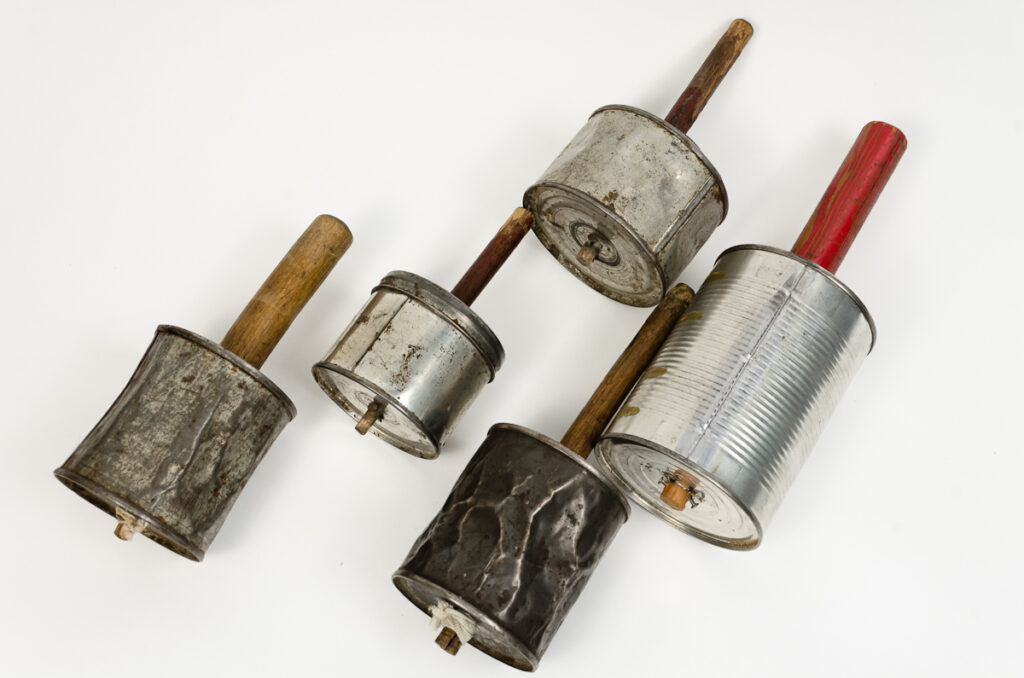
These rattles were used in Boodade ceremonies. You can see them in the hands of apprentices in the photo above.
11. Odaminowinan (counting sticks)
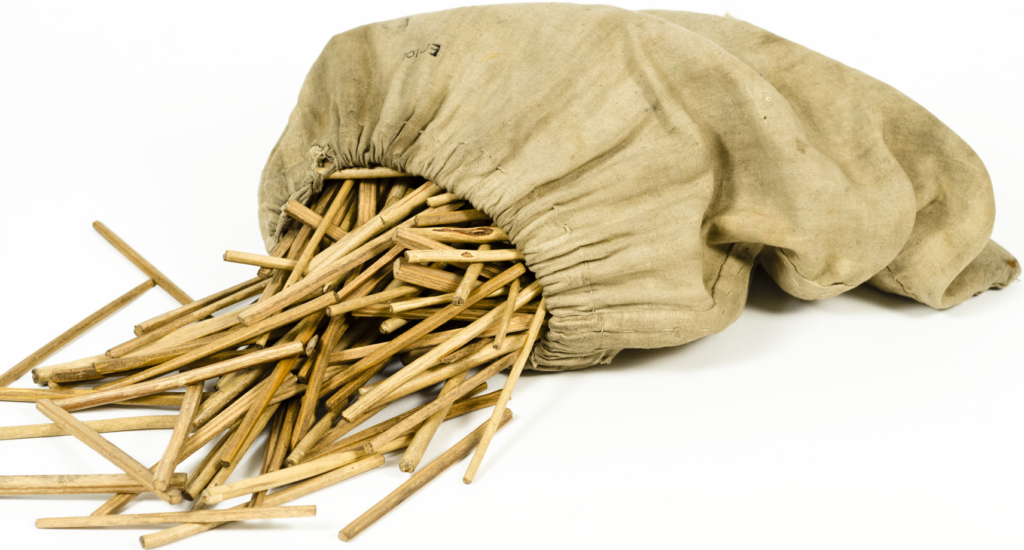
These are used for scoring in the moccasin game makizinataagewin, a lively gambling game played by both Anishinaabe and Cree.
12. Odaminwaagan/Nabawaaganag (cup and pin game)

This hand-eye coordination game is made of hide, a piece of stiff metal wire and ankle bones of a caribou. The player swings the bones and leather tail and scores points when they catch particular bones or put the wire through holes in the leather tail. The game is played by children and adults. It is usually played only in winter. The game seen here was made by Miskwaa’o Owen for Omishoosh when he was a child in the 1920s or 30s.
13. Aagimag (snowshoes)
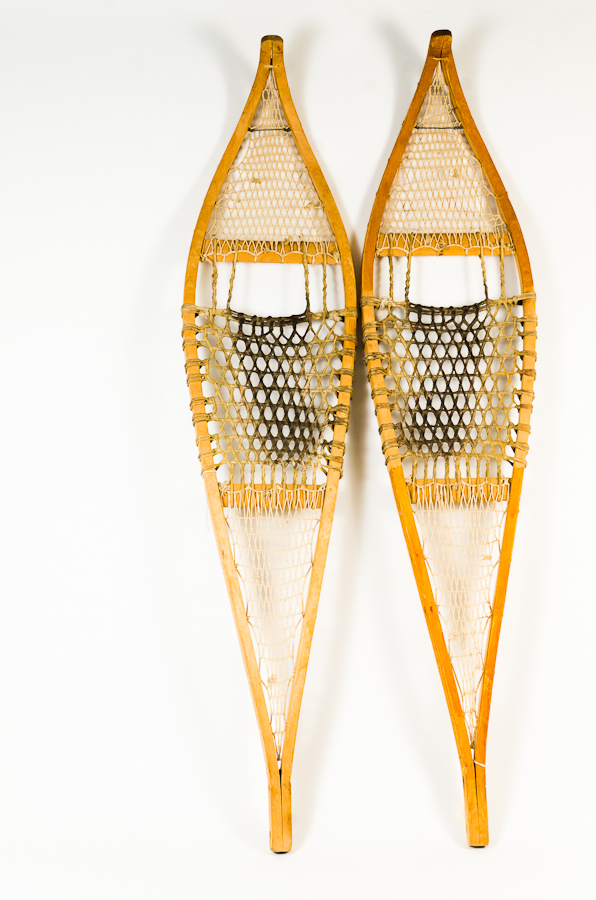
Anishinaabeg used snowshoes in winter to travel to hunting grounds and around traplines. They carved and bent poplar or birch to make the frames. These snowshoes were made by Sugashki Strang of Pauingassi for his own use in the 1960s.
14. Aagim zhaaboniganan (snowshoe needles)
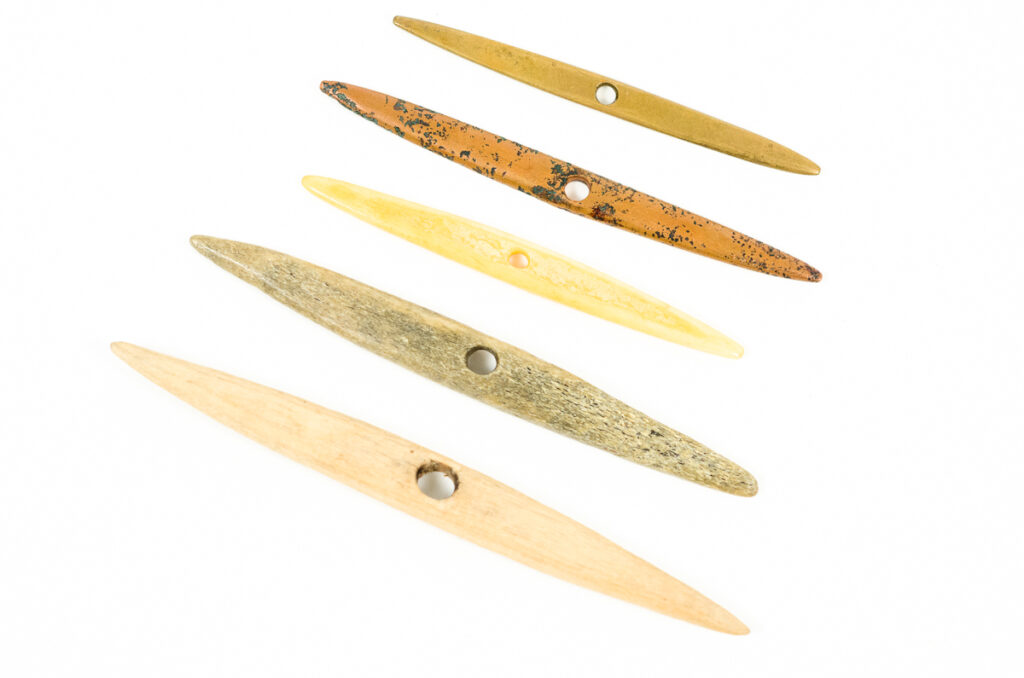
Anishinaabeg laced shoeshoes with rawhide using snowshoe needles. The top snowshoe needle was made by James Owen.
15. Netting shuttles
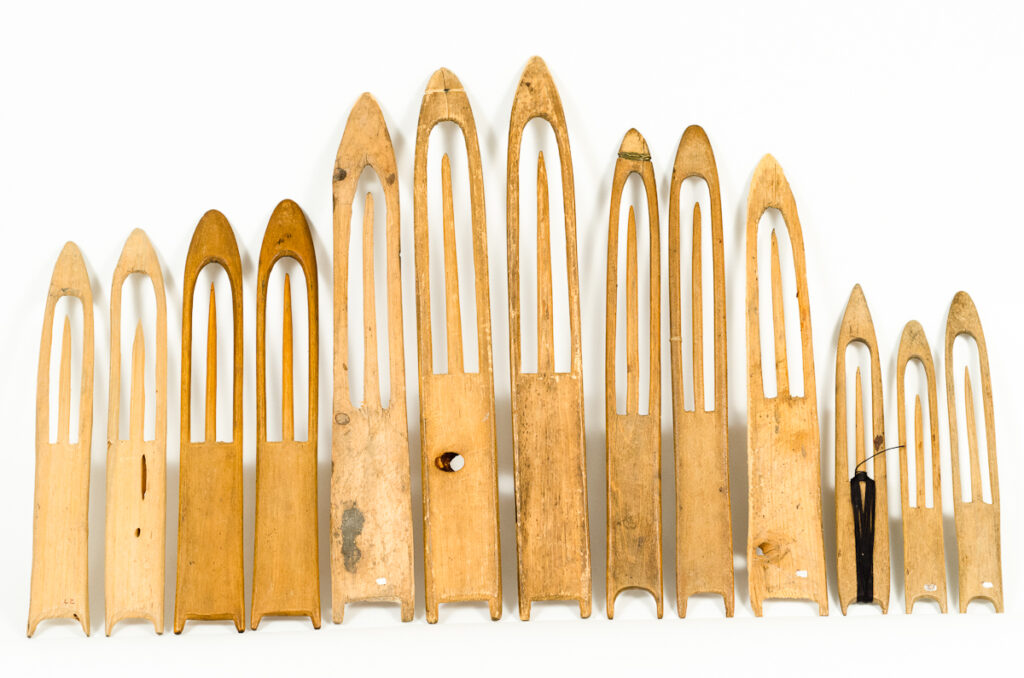
These netting shuttles for making fishnets are made of poplar or birch and finely carved. Fish nets were made out of twisted fibre made with nettles or other fibrous plants. The size of the shuttle sets the size of the net. Anishinaabeg made fine-mesh seine nets, which were used in spring at a weir to scoop fish out of the river. In fall, they made gill nets, which catch fish in deeper water at the mouths of rivers as the fish prepare to spawn just before freeze-up. The smallest shuttles are about seven centimetres high and the biggest are about 30 centimetres high.
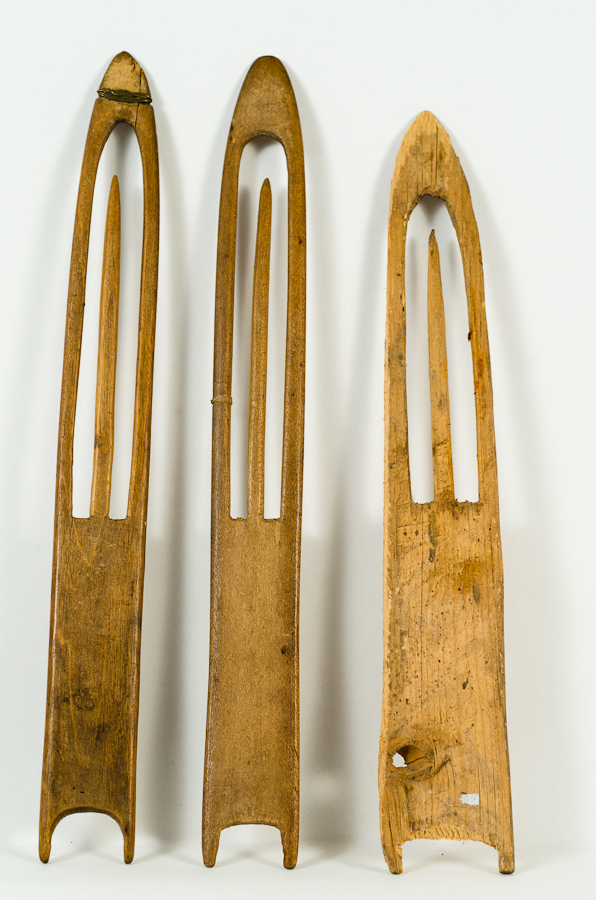
16. Waaboose saykun (rabbit fur blanket)
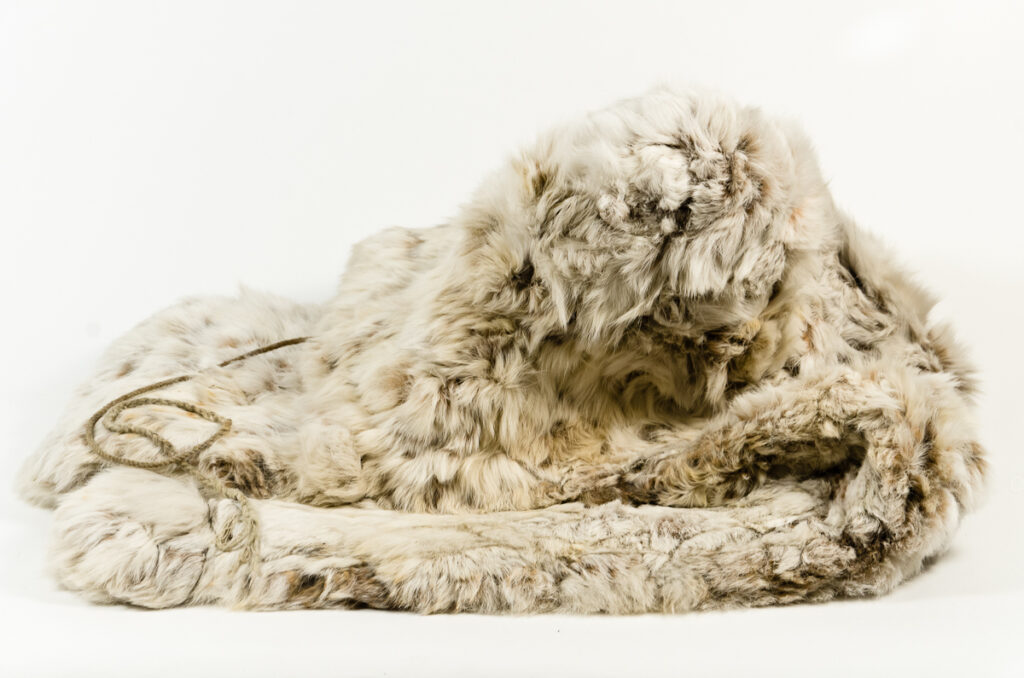
This rabbit fur blanket is made up of about 300 rabbit pelts. It is about the size of an adult sleeping bag and incredibly warm. It is made using a netting technique on a portable loom. This blanket was made by Augusta Owen in the 1960s.
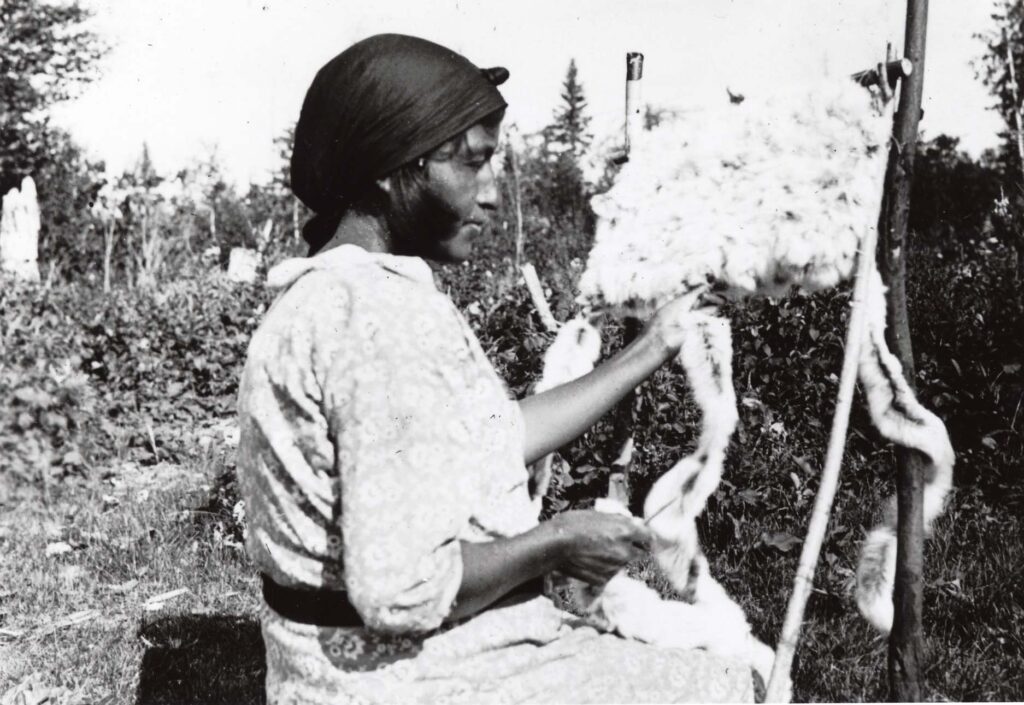
17. Gwaaba’igan(ag) (ice scoop or dipper)
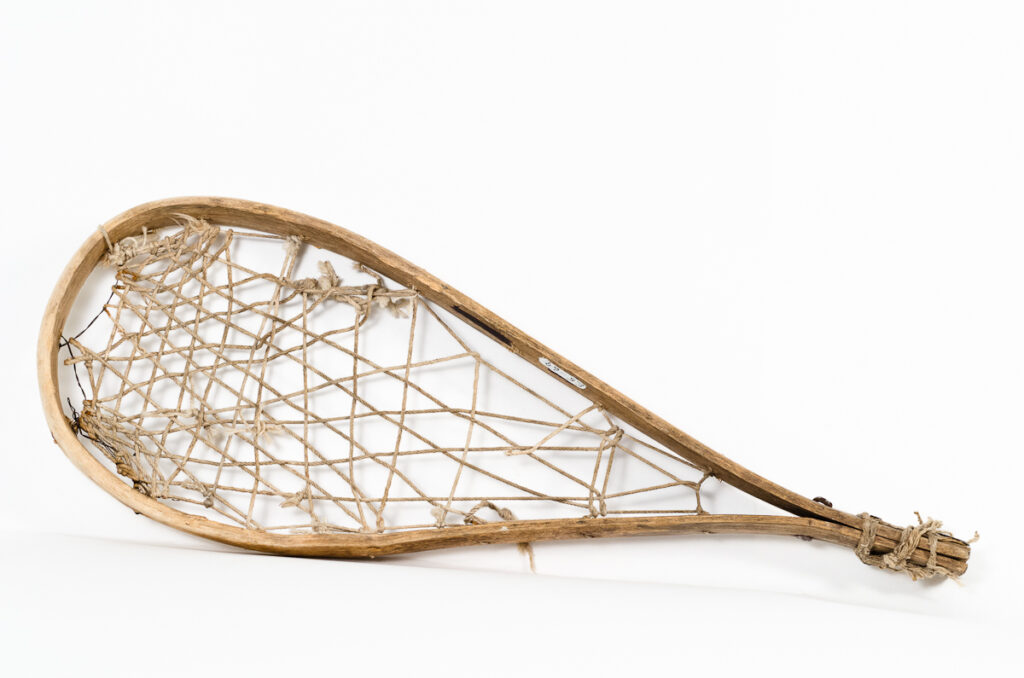
When you collect water in winter from a hole in the ice, this scoop is used to move pieces of ice out of the way so that your bucket will have water and not ice in it.
18. Spoon (emikwan)
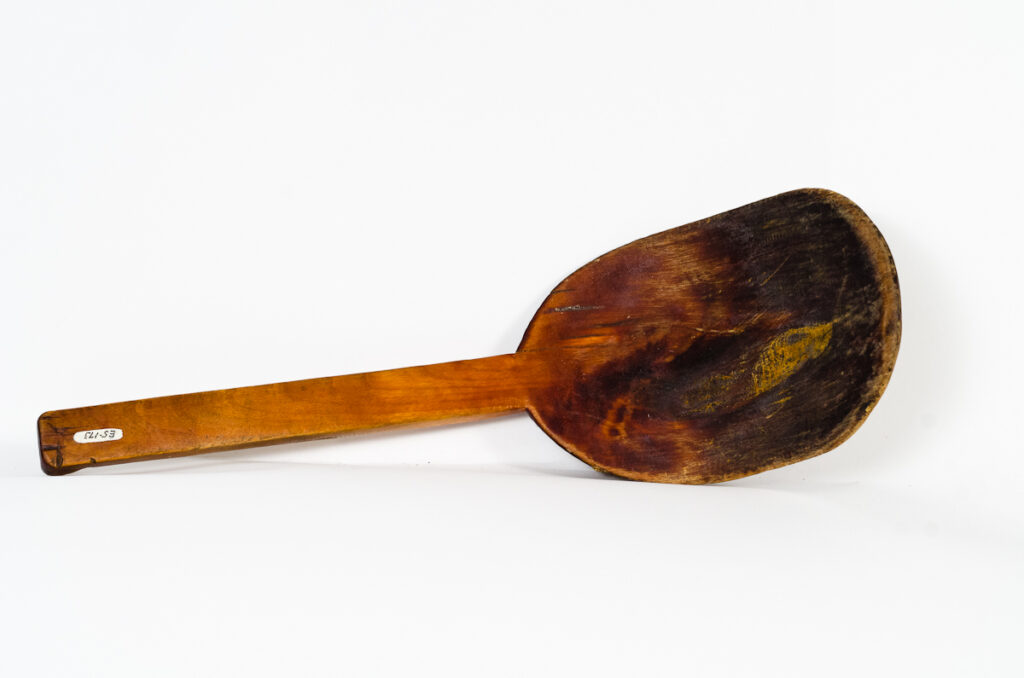
This hand-carved spoon is large, bigger than salad servers, and was used to stir and serve soup and stew. It may also have had a ceremonial role. Spoons tend to be owned and used exclusively by one person. The same is true of drinking cups.
19. Mikingan(an) (hide scrapers)

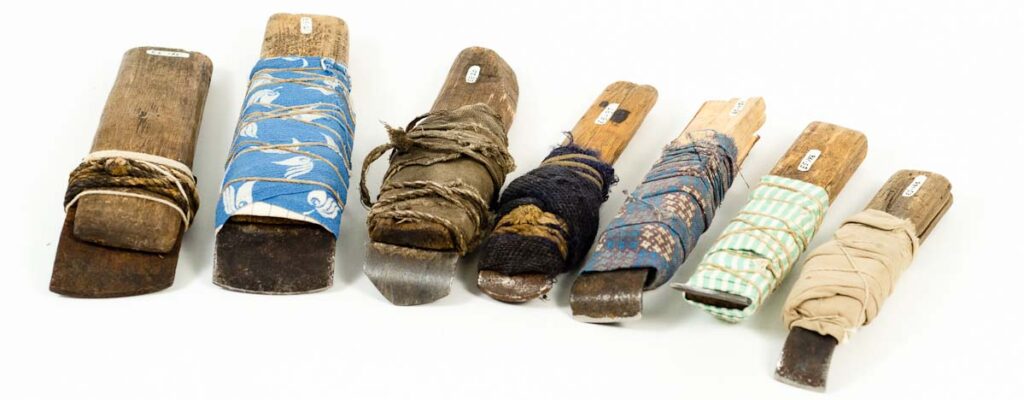
Moose hide scrapers are used to remove flesh and hair from moose hide. The ones on the left have a metal blade and the ones on the right are made of a sharpened moose or caribou shin bones.
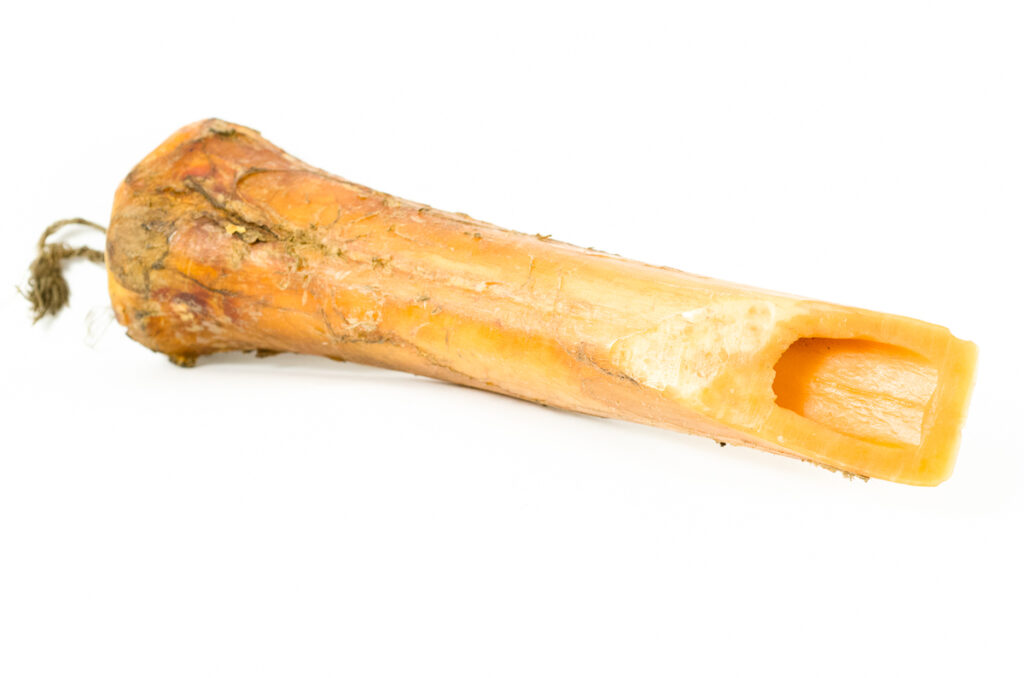
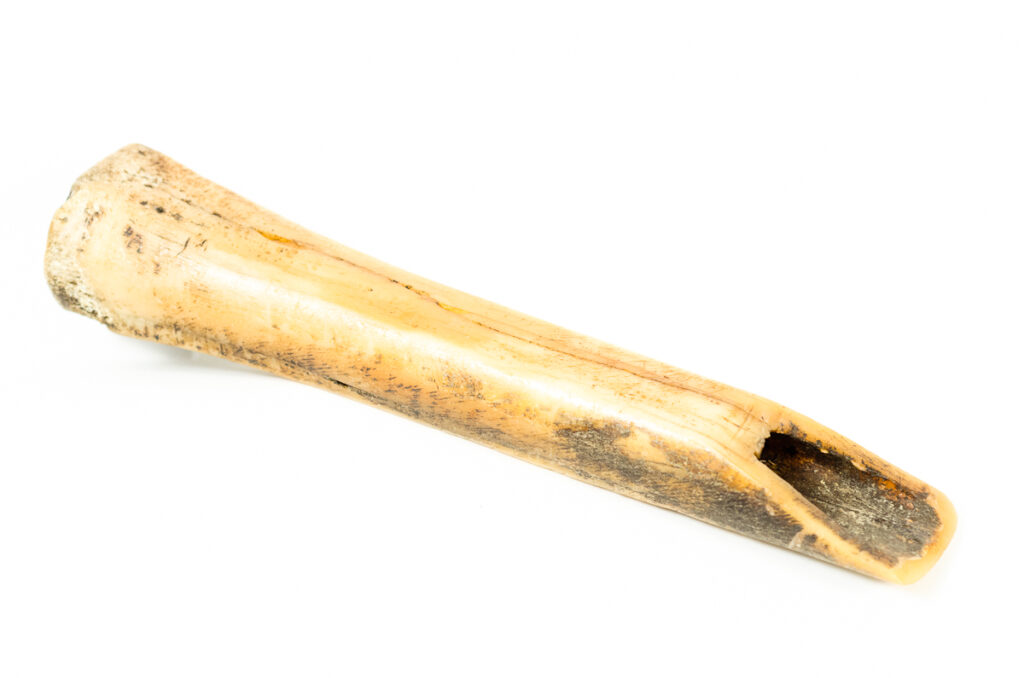
20. Dikinaagan (cradle board)
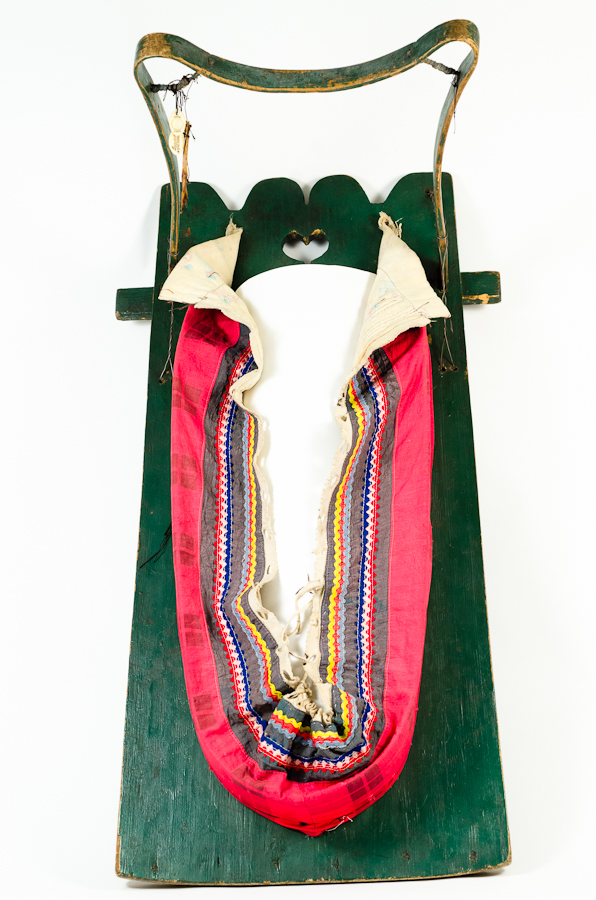
Cradle boards were made by the family for the baby. The father usually made the wooden backboard and frame for the bumper and the mother made and decorated the mossbag into which the child was laced. Women in Pauingassi favour bright plaids for these mossbags and sometimes they are elaborately embroidered. The dikinaagan pictured here was made by William Baptiste in 1958.
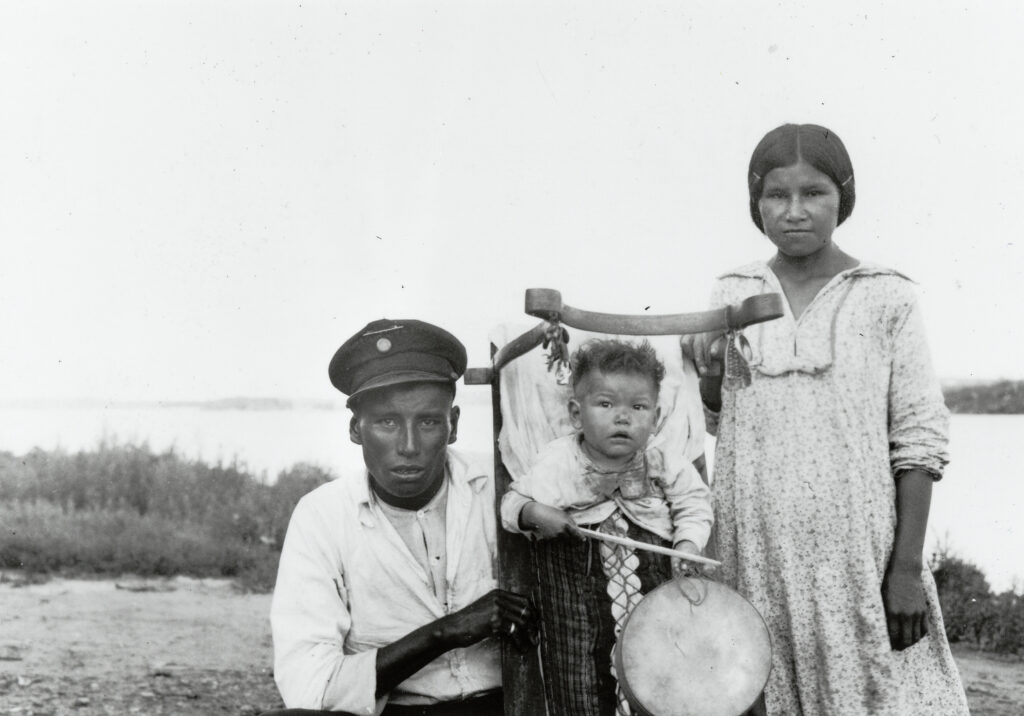
21. Minjikaawanag (gauntlets)
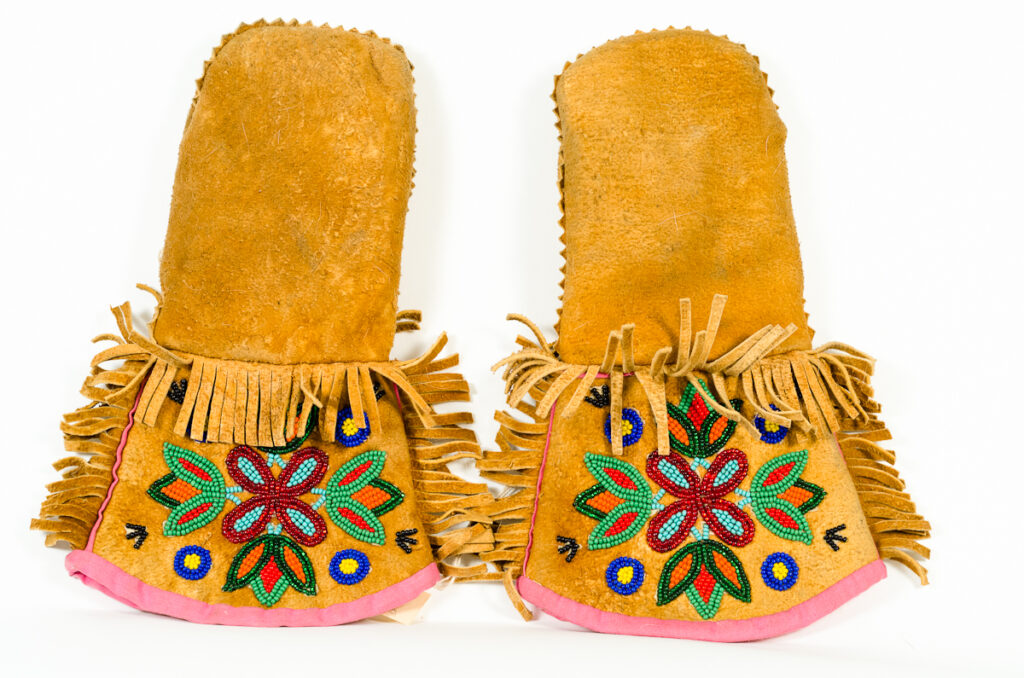
These are children’s gauntlet mittens with beautiful beading. They are made of smoked, brain-tanned moosehide by Mary Crow of Pauingassi in 1970.
 Shop
Shop 